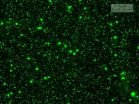Stem cell mobilization therapy found to be safe for bone marrow donors
2011-08-12
(Press-News.org) (WASHINGTON, August 11, 2011) – According to a study published in Blood, the Journal of the American Society of Hematology (ASH), researchers have reported that administration of granulocyte colony-stimulating factor (G-CSF), a drug that releases stem cells from the bone marrow into the blood, is unlikely to put healthy stem cell donors at risk for later development of abnormalities involving loss or gains of chromosomes that have been linked to hematologic disorders such as myelodysplastic syndromes (MDS) and acute myeloid leukemia (AML).
G-CSF therapy is given to healthy stem cell donors in order to move the donor's stem cells out of the bone marrow and into the blood stream, a process called mobilization. Once in the blood, large doses of stem cells can be collected safely and without surgery via a process called apheresis, avoiding bone marrow harvest in the operating room. Research has shown that the large doses of mobilized stem cells (called peripheral blood stem cells or PBSCs) can repopulate the bone marrow and create new blood cells faster than stem cells collected directly from the bone marrow, and a number of long-term follow-up studies have demonstrated that healthy donors are not at an increased risk of developing leukemia or other cancers following PBSC donation.
"In recent years, PBSCs have become the dominant source of stem cells for stem cell transplants and the number of transplants performed with PBSCs that have been mobilized with G-CSF has substantially increased. However, the potential for the therapy to cause DNA damage, mutations, or cancer had been suggested in a smaller and less comprehensive prior study, raising a serious concern within the transplant community and making a definitive study very important. Our study aimed at investigating potential effects of G-CSF on chromosomes in healthy donors," said Betsy Hirsch, PhD, first author of the study and Associate Professor in the Department of Laboratory Medicine and Pathology at the University of Minnesota Medical School.
In order to explore whether G-CSF therapy is indeed a potential cause of chromosome loss or gain in donors, a research team from the University of Minnesota Medical School conducted a study to determine whether there was any risk with short-term, low-dose usage of G-CSF on healthy PBSC donors. The study evaluated blood samples taken from 22 PBSC donors who had received G-CSF and 22 controls with no history of cancer or prior exposure to the therapy over a 12 month period.
Using fluorescence in situ hybridization (FISH), a technique that can detect specific targeted regions of DNA in an individual's cells to identify chromosomal abnormalities, the researchers evaluated the white blood cells of the study subjects for aneuploidy, a condition in which there is an abnormal number of chromosomes. Loss and gain of chromosomes represent one form of chromosome instability that is frequently a step in the development of cancer. Specifically, the researchers focused on chromosome 7 and a series of other chromosomal regions well documented to be associated with MDS and AML. The researchers also evaluated the cells to determine if both copies of a given chromosome replicated in synchrony or asynchronously, as asynchronous replication can also signal genomic instability and a higher risk of chromosomal abnormalities.
"Contrary to the previously published data, our study concludes that G-CSF stimulation does not result in replication asynchrony or induce the atypical levels of abnormality for chromosome 7 or other chromosomes that have been associated with MDS and AML, and we expect that these results can be generalized to all chromosomes," said Dr. Hirsch.
Jeffrey McCullough, MD, senior study author and Professor in the Department of Laboratory Medicine and Pathology at the University of Minnesota Medical School, added, "Furthermore, our data support the conclusion that G-CSF does not induce chromosomal instability through the PBSC mobilization process and remains a safe therapy for healthy stem cell donors."
INFORMATION:
The American Society of Hematology is the world's largest professional society concerned with the causes and treatment of blood disorders. Its mission is to further the understanding, diagnosis, treatment, and prevention of disorders affecting blood, bone marrow, and the immunologic, hemostatic, and vascular systems by promoting research, clinical care, education, training, and advocacy in hematology. The official journal of ASH is Blood, the most cited peer-reviewed publication in the field, which is available weekly in print and online.
END
ELSE PRESS RELEASES FROM THIS DATE:
2011-08-12
While many Britons enjoyed the recent heatwave, taking the chance to lie back and top up their tans, for others it only served to heighten their fears of damp armpits and clammy hands.
As a result, Transform Cosmetic Surgery Group recorded a 45% surge in enquiries into use of BOTOX injections a treatment for excessive sweating over a three-day period of the heatwave as the nation become more perspiration-conscious.
Known as hyperhidrosis, the condition sees sweat glands become overactive, something often made worse during periods of hot weather. During the procedure, ...
2011-08-12
By isolating cells from patients' spinal tissue within a few days after death, researchers funded by the National Institutes of Health have developed a new model of the paralyzing disease amyotrophic lateral sclerosis (ALS). They found that during the disease, cells called astrocytes become toxic to nerve cells – a result previously found in animal models but not in humans. The new model could be used to investigate many more questions about ALS, also known as Lou Gehrig's disease.
ALS can run in families, but in the majority of cases, it is sporadic, with no known ...
2011-08-12
(Santa Barbara, Calif.) –– Viruses fill the ocean and have a significant effect on ocean biology, specifically marine microbiology, according to a professor of biology at UC Santa Barbara and his collaborators.
Craig A. Carlson, professor with UCSB's Department of Ecology, Evolution, and Marine Biology, is the senior author of a study of marine viruses published this week by the International Society for Microbial Ecology Journal, of the Nature Publishing Group.
The new findings, resulting from a decade of research, reveal striking recurring patterns of marine virioplankton ...
2011-08-12
PASADENA, Calif.— Like scars that remain on the skin long after a wound has healed, earthquake fault lines can be traced on Earth's surface long after their initial rupture. Typically, this line of intersection between the area where the fault slips and the ground is more complicated at the surface than at depth. But a new study of the April 4, 2010, El Mayor–Cucapah earthquake in Mexico reveals a reversal of this trend. While the fault involved in the event appeared to be superficially straight, the fault zone is warped and complicated at depth.
The study—led by researchers ...
2011-08-12
MADISON, WI, JULY 11, 2011 -- Although phosphorus is an essential nutrient for all life forms, essential amounts of the chemical element can cause water quality problems in rivers, lakes, and coastal zones. High concentrations of phosphorus in aquatic ecosystems are often associated with human activities in the surrounding area, such as agriculture and urban development. However, relationships between specific human sources of phosphorus and phosphorus concentrations in aquatic ecosystems are yet to be understood. Establishing these relationships could allow for the development, ...
2011-08-12
WHAT:Pyrazinamide has been used in combination with other drugs as a first-line treatment for people with tuberculosis (TB) since the 1950s, but exactly how the drug works has not been well understood. Now, researchers have discovered a key reason why the drug effectively shortens the required duration of TB therapy. The finding potentially paves the way for the development of new drugs that can help eliminate TB in an infected individual even more rapidly. The study was supported by the National Institute of Allergy and Infectious Diseases (NIAID), part of the National ...
2011-08-12
In 1991, Carl Lewis was both the fastest man on earth and a profound long jumper, perhaps the greatest track-and-field star of all time in the prime of his career. On June 14th of that year, however, Carl Lewis was human. Leroy Burrell blazed through the 100-meters, besting him by a razor-thin margin of three-hundredths of a second. In the time it takes the shutter to capture a single frame of video, Lewis's three-year-old world record was gone.
In a paper just published in the journal Neuron, a team at the Stanford School of Engineering, led by electrical engineers Krishna ...
2011-08-12
PITTSBURGH—The transport system inside living cells is a well-oiled machine with tiny protein motors hauling chromosomes, neurotransmitters and other vital cargo around the cell. These molecular motors are responsible for a variety of critical transport jobs, but they are not always on the go. They can put themselves into "energy save mode" to conserve cellular fuel and, as a consequence, control what gets moved around the cell, and when.
A new study from Carnegie Mellon University and the Beatson Institute for Cancer Research published in the Aug. 12 issue of Science ...
2011-08-12
A federal judge in the United States District Court for the Middle District of Florida has ruled that Florida drug crime laws violated a defendant's due process rights. At issue was whether prosecutors must prove that an accused drug trafficker had knowledge of drug possession, which is a fundamental legal principle in American criminal justice and the common law that preceded it.
Amendments to Florida's criminal code in 2002 removed the mens rea requirement from the Drug Abuse Prevention and Control law. The term is Latin for "guilty mind" and is best summed ...
2011-08-12
August 11, 2011 (Aurora, CO)--In an article published online this week in Nature Genetics, a University of Colorado Cancer Center team in partnership with universities in China and Denmark reports the first genetic sequencing of urothelial (transitional) carcinoma, the most prevalent type of bladder cancer.
Recognizing the genetic mutations that make bladder cancer cells different than their healthy neighbors may allow early genetic screenings for cancer and new therapies targeting cells with these mutations. In addition, the mutations the team found are similar to those ...
LAST 30 PRESS RELEASES:
[Press-News.org] Stem cell mobilization therapy found to be safe for bone marrow donors


